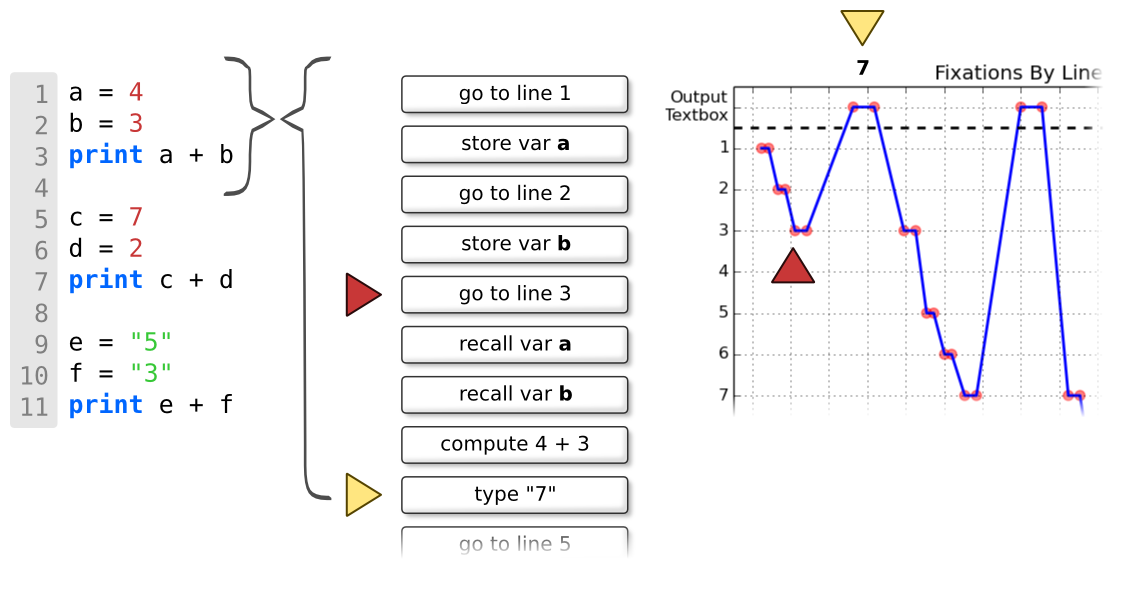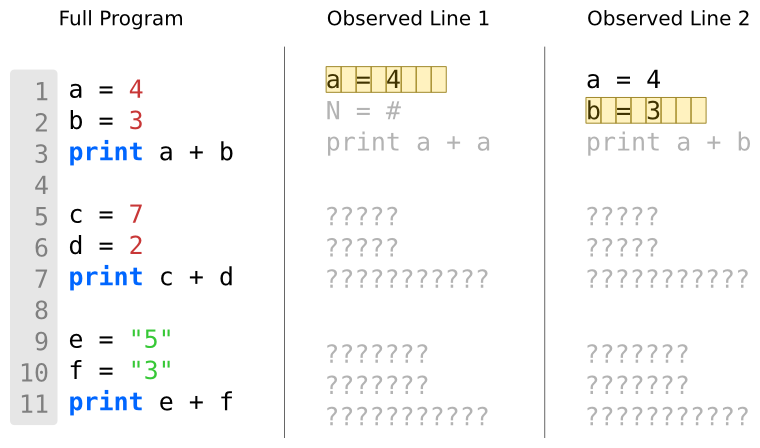In [1]:
from IPython import display
Motivation and Goals¶
Motivation¶
- Existing code complexity metrics are not "cognitive"
- Almost all cognitive models of program comprehension are qualitative
- Evaluate different modeling formalisms in a very complex domain
Goals¶
- Produce a computational model of simple program evaluation
- End-to-end model: text to fixations/keystrokes
- Produce human-like errors and timings
Mr. Bits
- Transforms program text to fixation/keystroke timings
- Uses ACT-R cognitive architecture
- Based on Cant Cognitive Complexity Metric (Cant, 1995)

Variable Context (Mr. Bits)¶
- Unique identity for variables over time
- Variable identity $\leftrightarrow$ ACT-R memory chunk
- Does not cover OO method dispatch
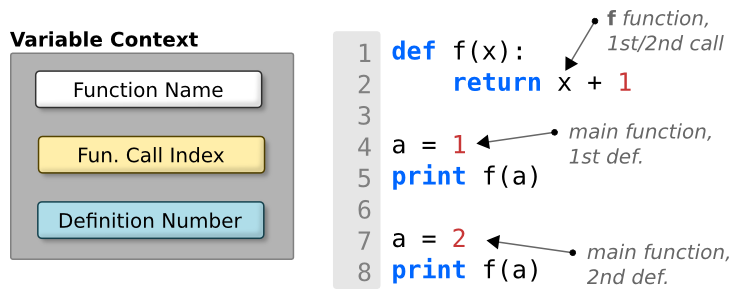
ACT-R Model (Mr. Bits)¶
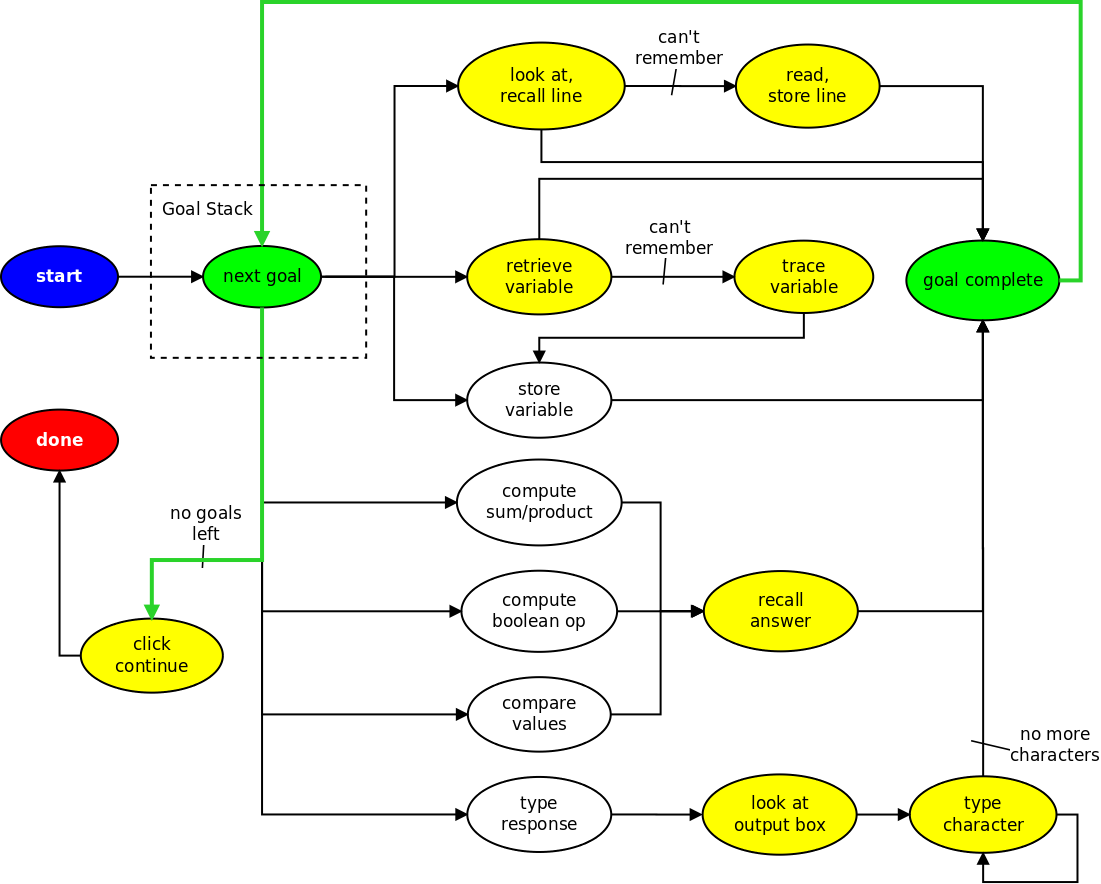
Sub-Symbolic + Remember Lists (Mr. Bits)¶
- Relative time spent on each line
- Humans (left), Mr. Bits (right)

Sub-Symbolic + Forget Lists (Mr. Bits)¶
- Relative time spent on each line
- Humans (left), Mr. Bits (right)

Trial Time Comparison (Mr. Bits)¶
- Human trial times, sorted low to high (bars)
- Mr. Bits trial times (lines)
| Sym+Remember: - - - | Sym+Forget: - - - | Sub-Sym+Remember: ---- | Sub-Sym+Forget: ---- |

counting - two_spaces¶
for i in [1, 2, 3, 4]:
print "The count is", i
print "Done counting"
Nibbles
- Model of program text to mental model transformation
- Cognitive Domain Ontology + constraint solver
- Attention, priming, errors
Cognitive Domain Ontologies (Nibbles)¶
- Based on Set Entity Structure (SES) theory (Zeigler & Hammonds, 2007)
- Capture spaces of behavior or situational knowledge (Douglass & Mittal, 2013)
- Represent mental models and reasoning processes of abduction, deduction, and induction (Johnson-Laird, 1986)
Tree Structure¶
- Entities and Relations (alternating)
- Attached variables on entities
- 3 Relations:
 Sub-parts
Sub-parts Choice-point
Choice-point Instances
Instances
Constraints¶
- Remove non-sensical solutions from space
- Built on 1st order logic
- Higher-order constraints on instances
Choice Points = Source of Generativity
Ball Example (Nibbles)¶
- Simple domain: two choice points
- CDO tree defines structure
- Constraints will add domain knowledge

Ball Example (Nibbles)¶
All Combinations (9 solutions)
(all-values
(let
((size
(either 'small 'medium 'large))
(sport
(either 'baseball 'golf 'basketball)))
(list size sport)))
With Domain Knowledge (3 solutions)
(all-values
(let
((size
(either 'small 'medium 'large))
(sport
(either 'baseball 'golf 'basketball)))
(assert! (and
(<-> 'small 'golf)
(<-> 'medium 'baseball)
(<-> 'large 'basketball)))
(list size sport)))
| Solution | Size | Sport |
|---|---|---|
| 1 | Small | Baseball |
| 2 | Small | Golf |
| 3 | Small | Basketball |
| 4 | Medium | Baseball |
| 5 | Medium | Golf |
| 6 | Medium | Basketball |
| 7 | Large | Baseball |
| 8 | Large | Golf |
| 9 | Large | Basketball |
Cheryl's Birthday Example (Nibbles)¶
Cheryl has a birthday, and she doesn't want to share it right away. So she gives her friends Albert and Bernard a list of 10 possible birthday dates:
- May 15, 16, 19
- June 17, 18
- July 14, 16
- August 14, 15, 17
Cheryl then tells Albert and Bernard separately the month and the day of her birthday respectively.
- Albert: I don't know when Cheryl's birthday is, but I know that Bernard doesn't know too.
- Bernard: At first I didn't know when Cheryl's birthday was, but I know now.
- Albert: Then I also know when Cheryl's birthday is.
So when is Cheryl's birthday?¶
Cheryl's Birthday CDO (Nibbles)¶
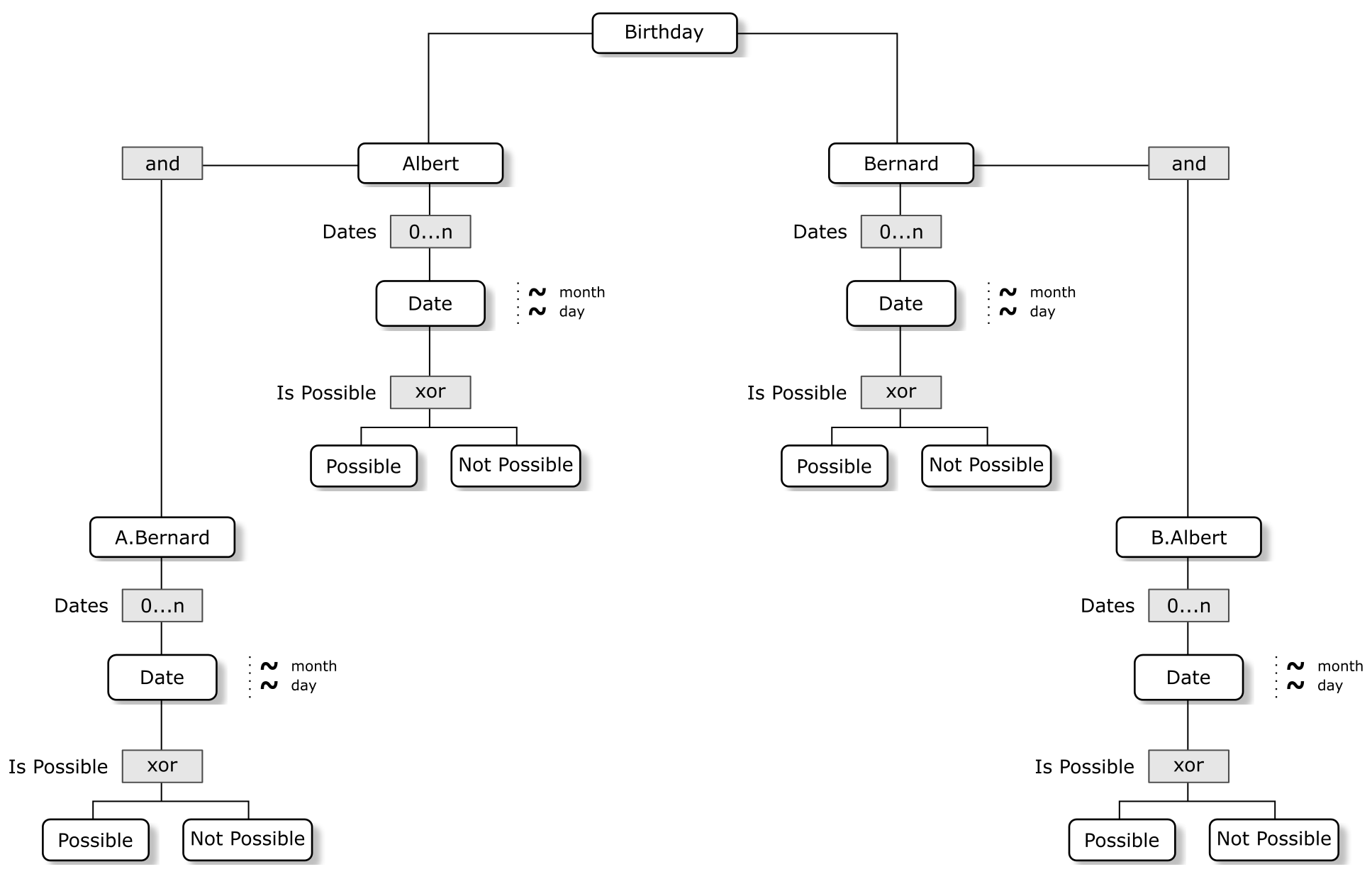
Cheryl's Birthday Solution (Nibbles)¶
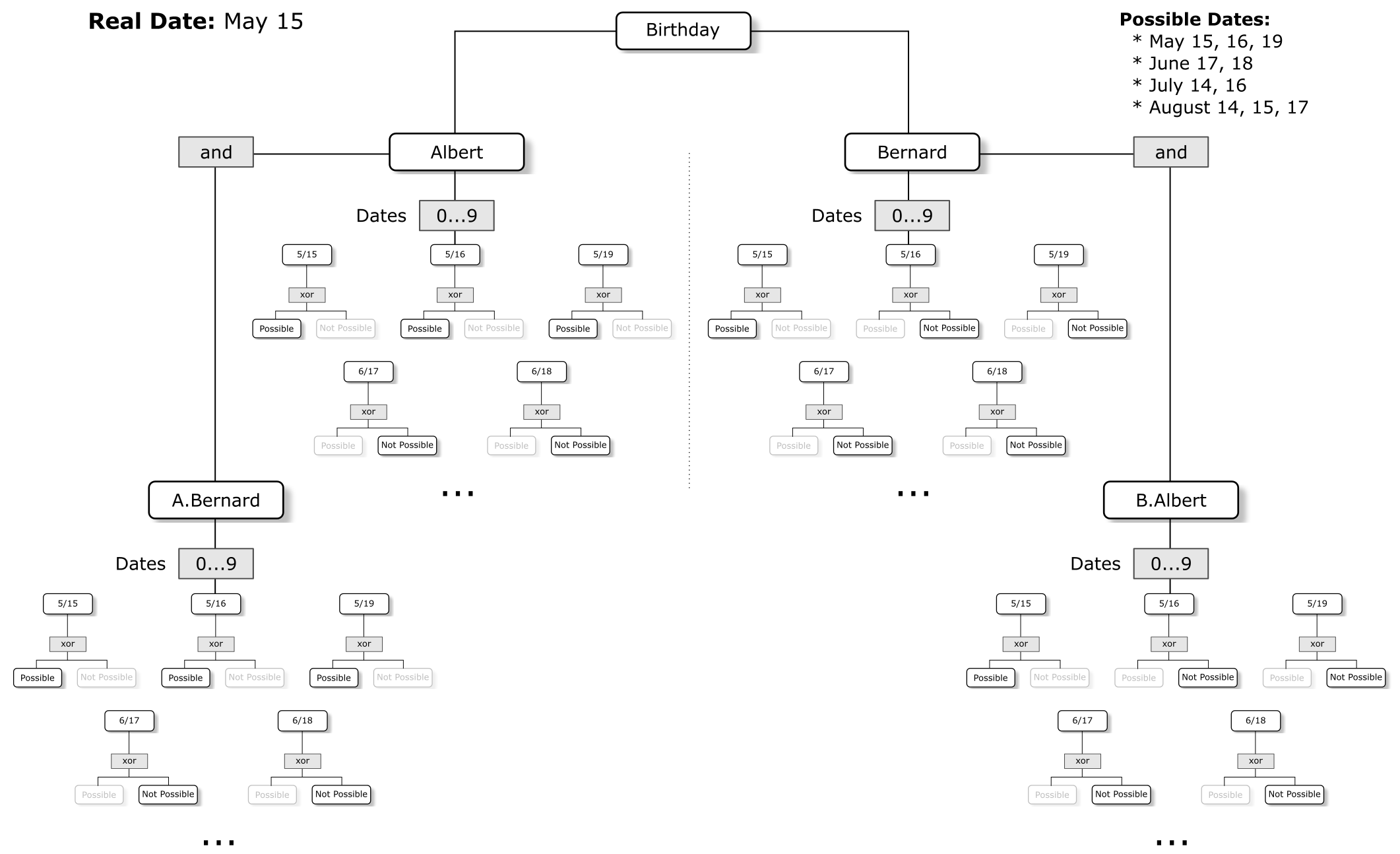
Cheryl's Birthday Constraints (Nibbles)¶
Albert Knows the Month¶
- All possible Albert dates have the same month
- Only 1 distinct month is possible
Albert Knows Bernard's Days¶
- All possible A.Bernard dates have days in Albert's month
Miscellaneous¶
- At least one date is possible!
- If a date is not possible for Bernard, it's not possible for Albert
Example¶
- Albert is told May (5)
- Possible Albert dates are 5/15, 5/16, 5/19
- Possible A.Bernard dates are 5/15, 8/15, 5/16, 7/16, 5/19
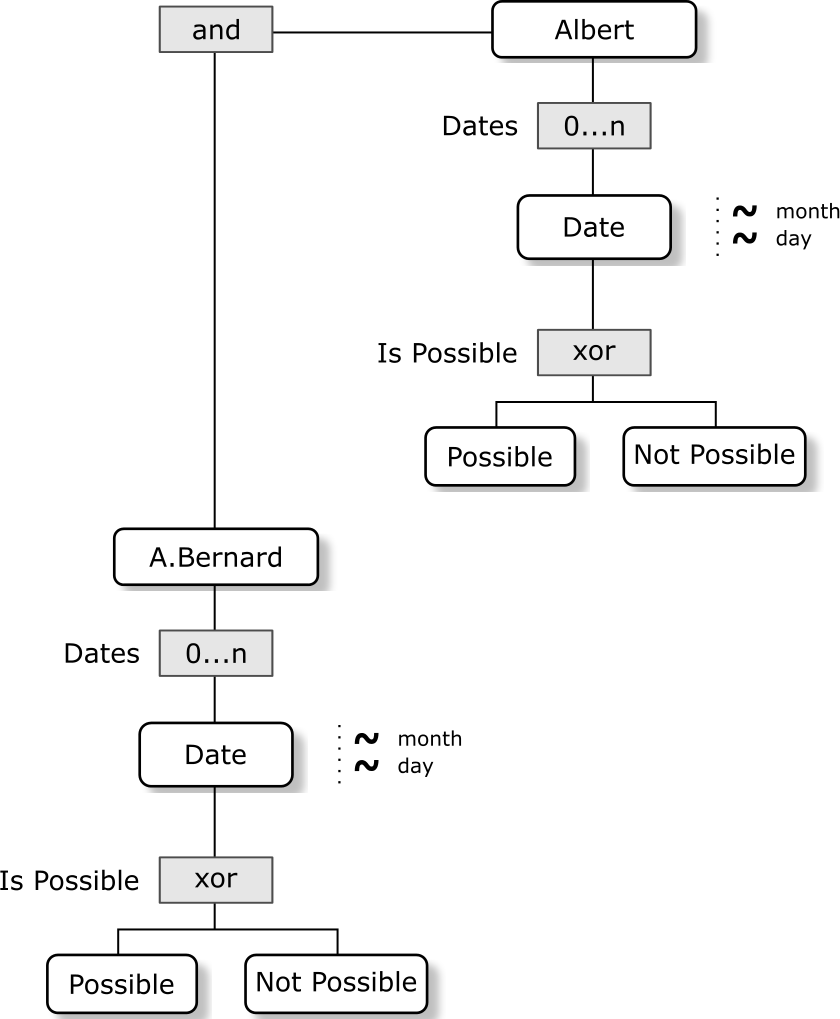
Cheryl's Birthday Constraints (Nibbles)¶
Bernard Knows the Day¶
- All possible Bernard dates have the same day
- Only 1 distinct day is possible
Bernard Knows Albert's Months¶
- All possible B.Albert dates have months with Bernard's days
Miscellaneous¶
- At least one date is possible!
- If a date is not possible for Albert, it's not possible for Bernard
Example¶
- Bernard is told day 14
- Possible Bernard dates are 7/14, 8/14
- Possible B.Albert dates are 7/14, 7/16, 8/14, 8/15, 8/17
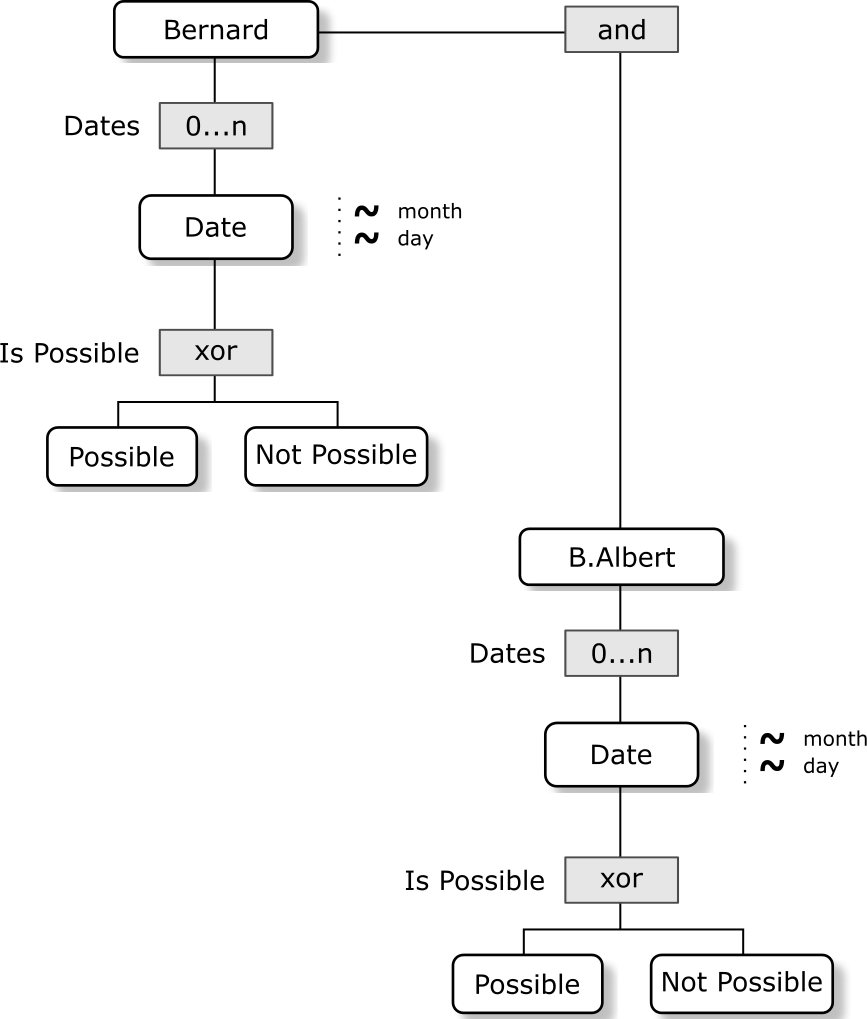
Cheryl's Birthday Step 1 (Nibbles)¶
- Albert: I don't know when Cheryl's birthday is, but I know that Bernard doesn't know too.
- Albert has more than 1 possible date
- A.Bernard does not have a possible, distinguishing day - 19 (May), 18 (June)
Possible Dates (A.Bernard):¶
- May 15, 16,
19 - June 17,
18 - July 14, 16
- August 14, 15, 17
Cheryl's Birthday Step 2 (Nibbles)¶
- Bernard: At first I didn't know when Cheryl's birthday was, but I know now.
- B.Albert does not have possible months with a distinguishing day - May (19), June (18)
- Bernard has only 1 possible date
Possible Dates (B.Albert):¶
May 15, 16, 19June 17, 18- July 14, 16
- August 14, 15, 17
With Bernard's Existing Constraints...¶
- All possible Bernard dates have the same day
- If a date is not possible for Albert, it's not possible for Bernard
Possible Dates (Bernard):¶
May 15, 16, 19June 17, 18- July
14, 16 August 14, 15, 17
Cheryl's Birthday Step 3 (Nibbles)¶
- Albert: Then I also know when Cheryl's birthday is.
- A.Bernard does not have possible months with a distinguishing day - May (19), June (18)
- A.Bernard only has 1 possible date
- Albert only has 1 possible date
- If a date is not possible for Bernard, it's not possible for Albert
Possible Dates (Albert):¶
May 15, 16, 19June 17, 18- July
14, 16 August 14, 15, 17
Only One Solution!¶
Abduction vs. Deduction¶
Abduction¶
- Add months, days to Albert, A.Bernard, Bernard, B.Albert
- Constraint solver generates Possible/Not Possible combinations
- Solution(s) gives you Cheryl's birthday(s)
Deduction¶
- Add possible date(s) to Albert, A.Bernard, Bernard, B.Albert (hypothesis)
- Constraint solver checks constraints
- A null set indicates an invalid hypothesis
Model Architecture (Nibbles)¶
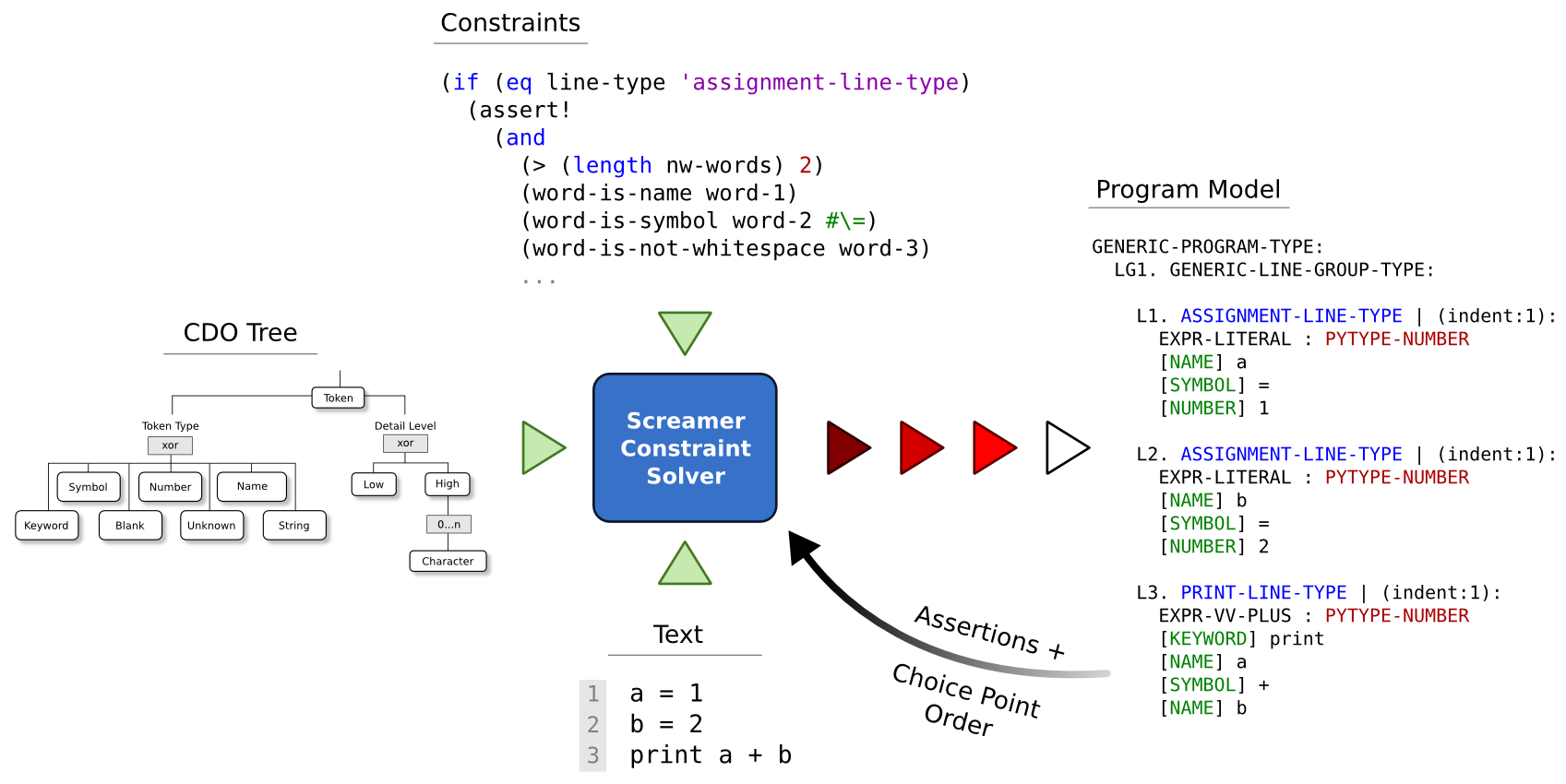
Program Model CDO (Nibbles)¶
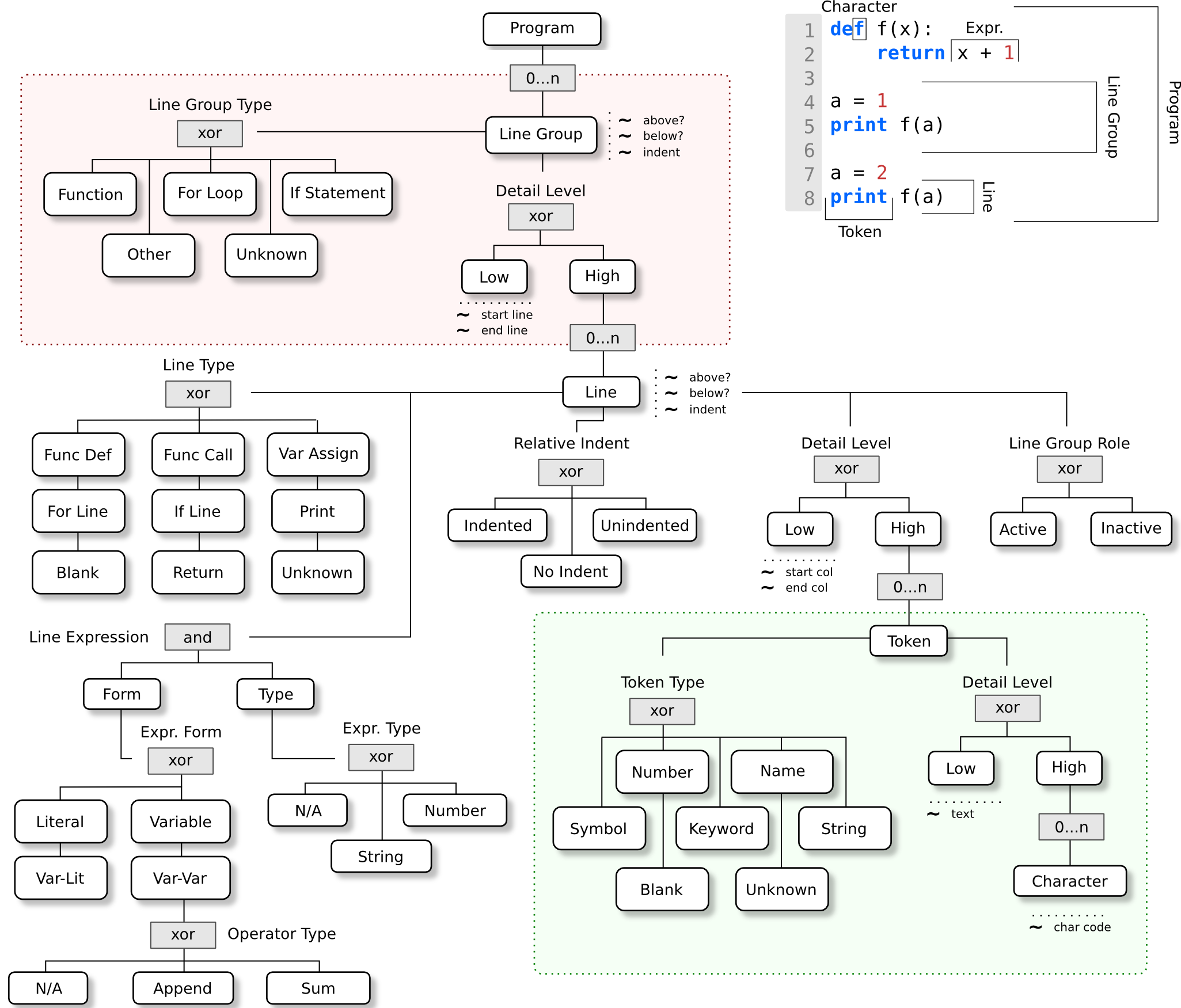
Program Model CDO (Nibbles)
Program¶
- 1 or more line groups
Line Group¶
- 1 or more related lines
- Forced on indent (e.g., function def)
Line¶
- 1 or more tokens on a single line
Token¶
- 1 or more characters
- Usually whitespace separated
GENERIC-PROGRAM-TYPE:
LG1. GENERIC-LINE-GROUP-TYPE:
L1. ASSIGNMENT-LINE-TYPE | (indent:1):
EXPR-LITERAL : PYTYPE-NUMBER
[NAME] a
[SYMBOL] =
[NUMBER] 1
L2. ASSIGNMENT-LINE-TYPE | (indent:1):
EXPR-LITERAL : PYTYPE-NUMBER
[NAME] b
[SYMBOL] =
[NUMBER] 2
L3. PRINT-LINE-TYPE | (indent:1):
EXPR-VV-PLUS : PYTYPE-NUMBER
[KEYWORD] print
[NAME] a
[SYMBOL] +
[NAME] b
Program Model Constraints 1/2 (Nibbles)¶
Program¶
- Fixated line is high detail (character level)
- Line above and below fixed are low detail + indent
- Other lines are unknown + line/token sizes
Line Group¶
- line-group-indent - if lines A and B in same group, A|B or A>B
- all-lines-active - every line belongs to 1 line group, in order
- line-group->lines:
- generic, for-loop-block, if-stmt-block, fun-def-block
- for, if, def start group + indent
Program Model Constraints 2/2 (Nibbles)¶
Line¶
- line->tokens:
- unknown, assignment, fun-def, fun-call, print-line, for-loop, if-stmt, return, whitespace
- Right-hand side expression
- Type: N/A, number, string
- Form: literal, variable, literal/literal, variable/variable
- Operator: plus-sum, plus-append
- Right-hand side expression
- unknown, assignment, fun-def, fun-call, print-line, for-loop, if-stmt, return, whitespace
- line-whitespace-at-end - empty tokens on the right
Token¶
- token->char:
- unknown, keyword, symbol, name, number, text, whitespace
- Size check (number of characters)
The Mighty Choice Point (Nibbles)¶
Priming¶
- Ordered enumeration of solution space
- Primed choice points are tried first
Classification¶
- Each choice is a type or category
- Constraints categorize entities
Group Membership¶
- Active or inactive choice for each member
- Constraints control membership
Restrict Solution Space¶
- High and low detail choice before instances
- Assertions control attention
Example 1: counting
- Whitespace primes wrong grouping
- Lack of indent info fails to cull wrong solution (last print is in its own line group)
Predictions
- Moving print up 2 lines will reduce errors (yes)
- Participants who make errors will recall last line without indent (?)
- Adding an "end" token below final print will reduce errors (?)
Open Questions
- Does changing "Done counting" make a difference?
- Does adding a nested for look help?
for i in [1, 2, 3, 4]:
print "The count is", i
print "Done counting"
Example 2: overload
- Priming re-orders (number/string, plus/append) choice points
- Weak number/string constraint fails to cull wrong solutions
Predictions
- Priming with append + will reduce errors (maybe)
- Not including numeric characters will reduce errors (?)
- Adding type tokens or making strings and numbers visually distinct will reduce errors (?)
Open Questions
- How does this help determine "cognitively optimal" operator overloading?
a = 4
b = 3
print a + b
c = 7
d = 2
print c + d
e = "5"
f = "3"
print e + f
Example 3: scope
- Expectations re-order choice points (a function must "do something")
- Incomplete parameter passing constraints allow wrong solution
- Right solution is buried
Predictions
- Experience will reduce errors (yes)
- Parameter name will not influence errors (yes)
- Reminding participants of Python pass-by-value will reduce errors (?)
Open Questions
- How to formalize "do something"? (Rist, 1986)
"...the smallest piece of knowledge used in program understanding is a transaction. A transaction can be described using three categories: what operation takes place (action), where it takes place (location) and what object is acted upon (object)."
def add_1(num):
num = num + 1
def twice(num):
num = num * 2
added = 4
add_1(added)
twice(added)
add_1(added)
twice(added)
print added
Model Capabilities (Nibbles)¶
Attention¶
- Full CDO space is infeasible to search entirely
- Combinatorics are carefully controlled via detail, assertions
Errors¶
- First solution assumed to be correct (other orderings?)
- Need back-tracking on null set
Abduction of Missing Code¶
- Bottom-up sensing + top-down knowledge
- A kind of "cogent confabulation"? (Hecht-Nielson, 2007)
Limitations and Threats to Validity (Nibbles)¶
Incomplete¶
- Need to finish Example 3
- Doesn't generate goals for end-to-end model
- No back-tracking when errors are noticed
Engineered Knowledge¶
- Domain structure and constraints are hand-built
- Few experiments to draw from
Cognitive?¶
- First solution assumed to be correct
- Simple priming from choice point ordering
Thank you!
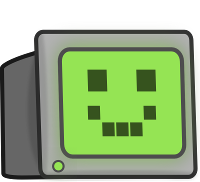

References¶
- Bernard P. Zeigler and Phillip E. Hammonds. Modeling & Simulation-Based Data Engineering: Introducing Pragmatics into Ontologies for Net-Centric Information Exchange. Academic Press, 2007.
- Douglass, Scott A. and Mittal, Saurabh. A framework for modeling and simulation of the artificial. In Ontology, Epistemology, and Teleology for Modeling and Simulation, pages 271–317. Springer, 2013.
- Hecht-Nielsen, Robert. Confabulation Theory: The Mechanism of Thought. Heidelberg: Springer, 2007.
- Johnson-Laird, Philip N. Mental models. No. 6. Harvard University Press, 1986.
- Rist, Robert S. "Plans in programming: definition, demonstration, and development." Empirical studies of programmers. Ablex, Norwood, NJ, 1986.
